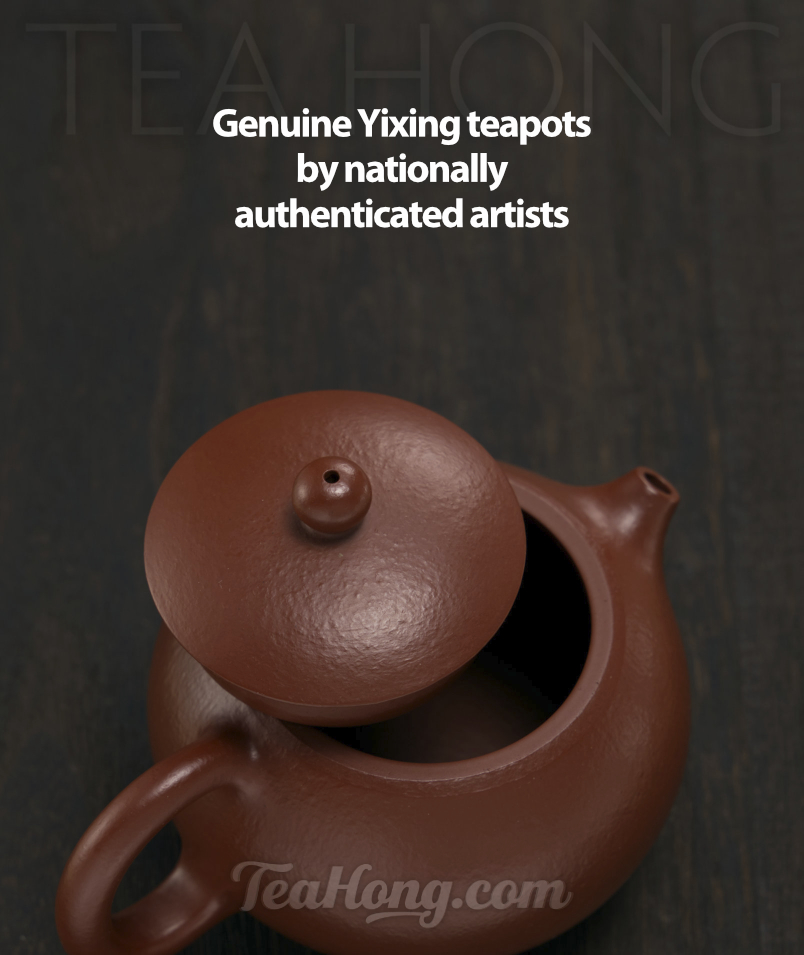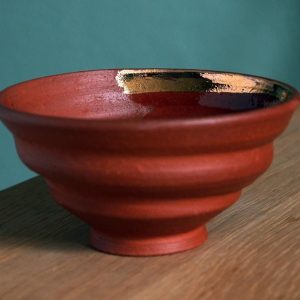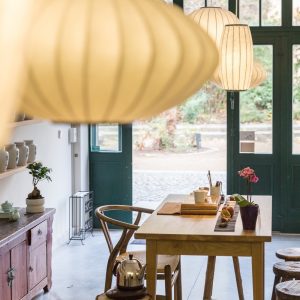- This topic has 13 replies, 4 voices, and was last updated 11 years, 4 months ago by
Leo.
-
AuthorPosts
-
-
2012.12.10 at 3:36 pm #8499
MEversbergII
ParticipantI have given this article a read a few times:
https://www.teaguardian.com/how-to-make-tea/tea-in-thermos.html#.UMX0Jqw61vE
Every now and again I’d brew some full strength tea and decant it into a stainless steel water bottle. As a person who cycles to work, I am fortunate in that I have a very good backpack – I can keep tea reasonably warm in one of the side pockets more than an hour. It would work alright with pu’erh and not quite so well with green style oolong. Cheap genmaicha also does “ok”.
Finally got around to acquiring a vacuum flask. It’s a “Coleman” brand stainless steel vacuum flask, at 16oz (473ml). Luckily for me the larger pot holds about 500ml!
This morning I made up some pu’erh in the large round teapot using the .5g per 100ml ratio. I was initially skeptical regarding the taste, as I used just around 2.5g at just under 500ml. Rather used to the 1:100 or 2:100 ratio at this point. Thermo was preheated to around 70.
Turns out it wasn’t bad at all! I suppose it was a bit weaker than I’m used to but it certainly kept a decent profile. Kept well warm, too. Tomorrow I think I will experiment at full 1g to 100ml strength, just to see how well that’ll go.
What has everyone else experience been like?
Also, I noticed Leo’s favourite is an 800ml model. When trying to fill that with a smaller pot, should one reuse the leaves (giving you less than “half strength”) or use fresh leaves for the second filling?
M.
-
2012.12.11 at 1:16 pm #8915
Leo
ParticipantI am happy that you’ve come to the same conclusion as mine with pu’er in the thermos. I think it is probably the only tea that is the least affected by storing in the heat retention vessel. As for filling that extra 300 ml that your teapot is short for, I’d either re-infuse the same batch of tea or simply add hot water. The texture of the infusion is not at its best anyway.

-
2012.12.11 at 3:39 pm #9135
MEversbergII
ParticipantTrue, that. Between the two I’d go for the rebrew; might retain flavour better.
Today’s attempt uses 3.2g in 450ml – around a “75%” brew, with respect to the 1g to 100ml. Going to see how that holds up compared to earlier.Thanks again for those tips!M. -
2012.12.13 at 1:10 pm #9131
ICE
ParticipantI propose bringing out hot water in the thermos and make tea on the spot. Tea tastes better this way.
-
2012.12.13 at 7:54 pm #9133
MEversbergII
ParticipantI have considered doing just that. Unfortunately, then I’d have to bring some kind of drinking vessel and some kind of strainer, along with the leaves. Gaiwan’s out of the question – too fragile. Considering building my own “travel kit” to bring with me biking, but that’s up in the air.
Also, I found the 50% brew to stay better tasting much longer than the 75% one. Could be a fluke, but that is my finding.M. -
2012.12.15 at 5:57 am #9276
Leo
ParticipantYup, bringing the tools out is an issue. Keeping the water hot enough for making tea after some hours is another one. However, I do agree with ICE that doing that will yield better tasting tea, and do that when I think I can afford the loading and the water isn’t going to be kept in the flask for that long.
-
2012.12.20 at 2:51 am #8994
MEversbergII
ParticipantI’ll give it a shot; I imagine it would work best for mid to lower temperature teas – greens and perhaps some oolongs.
Speaking of which, I have neglected to ask about hongchas. You have an order of preference listed as such:Shu cha types of Pu’ers > machine-made black tea > matured shengcha pu’er > browned styled Wuyi oolong/Tieguanyin > full leaf black tea > white tea > higher-fired green tea > baked/roasted green tea > classic style Phoenix oolongs > greeneroolongs > steamed green teaI have made good use of the first one on the list (this category is quickly becoming a favorite due to its apparent versatility). The second and the fourth are what I’m turning to in the future as an alternative. What comprises “machine made” black tea? How is it different from what is listed as “full leaf black tea” ? Are there any on TeaHong that would fall into the “machine made” category? I intend to give my incoming “Congu Rustic” a try (invariably, I’ll experiment with every tea I can out of curiosity) and I’m guessing it falls under the full leaf category.Thanks,M. -
2012.12.31 at 4:09 am #9074
MEversbergII
ParticipantToday I tried the bailin gongfu hongcha sold as “Congou Rustic” by TeaHong. I gave it the 1/2g to 100ml infusion and bottled it up before going on a ride, and finally got to crack it open about two hours after I made it.
Still enjoyable.However, it’s profile in flavour drifted considerably more than the pu’er. It was actually extremely evocative of a specific type of Echinacea tea-bag tea I had tried nearly a year ago. Perhaps being stored as it was brought a final highlight to it’s floral characteristic?Going to see what other kinds of minhongs I can get next time for a bit more experimentation.M. -
2013.01.04 at 5:09 am #9035
tea soul
ParticipantI think almost all other tea varieties other puerh change taste in the thermos.
-
2013.01.06 at 4:48 am #9065
MEversbergII
ParticipantOh, almost certainly. Monday I plan to try the Yunwu Wild Bush thermo style. I’ll make it around 9, as I’m typically at my desk by 11 and it seems to ballpark that I don’t “get to” my tea for about 2 hrs on the above trials.
As for pu’erhs, I have noticed that the older shu cha I have appears to have changed in flavour more than the younger – the difference between the two being stated at 4 years. The younger seems to retain a pleasant woody / hay flavour – which isn’t as present in the older one – while the older pu’erh seems to have more “earth” and is more subtle. However, I have made more infusions with the younger pu’er, so I have more data points.M. -
2013.01.07 at 5:34 pm #9043
MEversbergII
ParticipantI am sipping on the Yunwu wild bush “travel ration” tea right now. It has hints at it’s “regular” profile, but the only flavour I can really get much of is actually similar to the Congou I mentioned above. It’s weaker, but there’s a similarity there. Also noticed it makes the mouth feel a little dryer than any others tried so far.
M.
-
2013.01.08 at 6:03 pm #9053
Leo
ParticipantAre you doing a table to document your findings? These are great findings for building up a comprehensive body of tea drinking knowledge
-
2013.01.09 at 4:04 am #9033
MEversbergII
ParticipantNot so much, no; sort of just tossing it up on here day by day. I have given thought to starting an organized binder for recording thoughts and preparation methods for various teas I make myself, though. My adjectives for tastes and aromas are not so highly developed, though.
Speaking of which, today I tried the recently purchased Tieguanyin Deep Brown 2010. At the half strength brewing it retains a bit of sweetness, a bit of smokiness but not much “body” if I understand the correct usage of the word.M. -
2013.01.11 at 9:15 pm #9055
MEversbergII
ParticipantTried a Tieguanyin “Emerald” style which, going by what I posted from the article above, is pretty much a poor choice. And it was! While it was “ok” fresh out of the pot (tiny bit of leftover), by the time I got to work it had all but lost it’s flavour. You could tell there was some tea there, but it wasn’t very noticeable.
That said, I’m actually not too good with oolongs – it’s a tea category I should experiment with more, as the “standard” infusion of 1g to 100ml in a ceramic pot for 5 minutes leaves much to be desired. I’m beginning to think the essence of oolongs is gongfu style infusions – especially the greener ones like Tieguanyin.
M.
-
-
AuthorPosts
- You must be logged in to reply to this topic.










